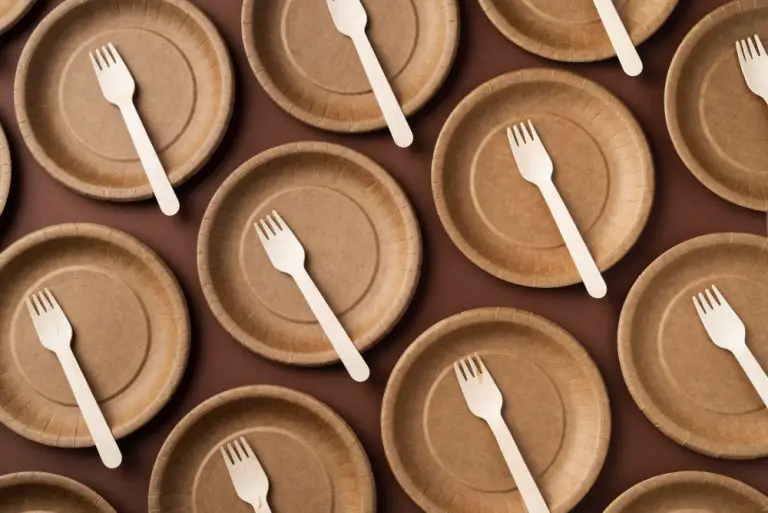In the quest for sustainability, the design of eco-friendly plates and bowls has undergone a remarkable evolution. Gone are the days when choosing environmentally responsible tableware meant compromising on aesthetics or functionality. Today, eco-friendly plates and bowls crafted from materials like sugarcane bagasse are not only sustainable but also stylish, making them a popular choice for both consumers and businesses. Let’s explore the innovative designs that are redefining the market for eco-friendly plates and bowls, blending beauty with environmental stewardship.
The Rise of Eco-Friendly Tableware: A Blend of Necessity and Innovation
As awareness of environmental issues grows, the demand for eco-friendly tableware has surged. This shift has driven manufacturers to innovate, ensuring that their products are not only sustainable but also meet the high standards of modern consumers in terms of design and functionality. Eco-friendly plates and bowls have thus emerged as symbols of this change, offering a perfect fusion of form and function.
1. Minimalist Elegance: Clean Lines and Simple Forms
One of the prominent trends in eco-friendly plates and bowls is minimalist design. Characterized by clean lines and simple forms, this style appeals to those who appreciate understated elegance. Minimalist designs often highlight the natural texture of materials like sugarcane bagasse, showcasing their unique organic beauty.
Example: Imagine a sleek, off-white plate with subtle natural fibers visible, creating a sophisticated yet earthy look. Such designs not only align with contemporary aesthetic preferences but also emphasize the raw, unprocessed nature of the materials, reinforcing their eco-friendly credentials.
2. Textured Surfaces: Adding a Touch of Nature
Textured surfaces have become a popular feature in eco-friendly tableware. These textures can range from subtle patterns that mimic natural elements like leaves or wood grains to more pronounced designs that add a tactile element to the dining experience.
Example: A bowl with a delicate leaf imprint not only adds visual interest but also a sensory dimension, making it a delightful piece to hold and use. These textures serve as a reminder of the product's natural origins and enhance the overall dining experience by bringing a touch of nature to the table.
3. Versatile Color Palettes: From Earthy Tones to Vibrant Hues
While traditional eco-friendly tableware often stuck to neutral colors, modern designs are embracing a broader palette. From earthy tones like beige, brown, and green to more vibrant hues, these colors can complement various dining settings and personal styles.
Example: Plates and bowls in muted earth tones are ideal for rustic, natural-themed gatherings, while those in bold, vibrant colors can add a pop of excitement to casual meals. This versatility allows eco-friendly tableware to fit seamlessly into any decor, enhancing both everyday dining and special occasions.
4. Innovative Shapes: Beyond the Conventional
Breaking away from conventional round and rectangular shapes, today’s eco-friendly plates and bowls feature innovative and functional designs. Geometric patterns, asymmetrical shapes, and multi-functional forms are making their way into the market, adding a modern twist to traditional tableware.
Example: A plate with a hexagonal shape or a bowl with an integrated sauce compartment not only stands out aesthetically but also offers practical benefits. These designs reflect the creativity and ingenuity driving the evolution of eco-friendly tableware, ensuring they meet diverse needs while maintaining environmental responsibility.
5. Customization and Personalization: Making It Unique
Customization has become a key trend in eco-friendly tableware, allowing consumers and businesses to personalize their plates and bowls. Whether through branding for restaurants or bespoke designs for personal use, customization adds a unique touch to these products.
Example: A set of eco-friendly plates engraved with a restaurant's logo or a family crest can make dining experiences more personal and memorable. Customization options include laser engraving, embossing, and even color choices tailored to specific preferences or themes.
Balancing Aesthetics and Sustainability: The Core of Modern Design
The integration of aesthetic appeal with sustainable practices lies at the heart of modern eco-friendly tableware design. Here’s how manufacturers achieve this balance:
Eco-Conscious Material Selection
Designs prioritize materials that are not only biodegradable but also responsibly sourced. Sugarcane bagasse, for instance, is a byproduct of the sugar industry, making its use in tableware a sustainable choice that minimizes waste.
Functional Durability
Despite their elegant appearance, eco-friendly plates and bowls are designed to be durable and practical. They can withstand the rigors of daily use, including exposure to heat and moisture, ensuring they meet the demands of both home and commercial settings.
Reduced Environmental Impact
Every aspect of the design process, from material sourcing to manufacturing and disposal, is considered to minimize environmental impact. This holistic approach ensures that eco-friendly tableware contributes positively to sustainability goals without sacrificing design quality.
Future Trends: What to Expect in Eco-Friendly Tableware
As technology and design philosophies evolve, the future of eco-friendly plates and bowls looks promising. Anticipated trends include:
Smart Design Integration
Future designs may incorporate smart features, such as temperature-sensitive coatings or modular components, enhancing functionality while maintaining sustainability.
Increased Material Innovation
Continued research into alternative materials, such as plant-based plastics and bio-composites, will likely lead to even more diverse and sustainable tableware options.
Enhanced Consumer Awareness
As consumers become more educated about the environmental impacts of their choices, demand for high-quality, aesthetically pleasing eco-friendly tableware will continue to grow, driving further innovation in this space.
Conclusion: Embracing the Future of Eco-Friendly Plates & Bowls
The innovative designs in eco-friendly plates and bowls are a testament to how sustainability and style can go hand in hand. By prioritizing both aesthetics and environmental responsibility, these products offer a compelling alternative to traditional tableware. As we embrace these advancements, we contribute to a more sustainable future while enjoying beautifully designed and functional tableware that enriches our dining experiences.
Discover more about the latest in eco-friendly plates and bowls at Ecolates, where sustainability meets style.





